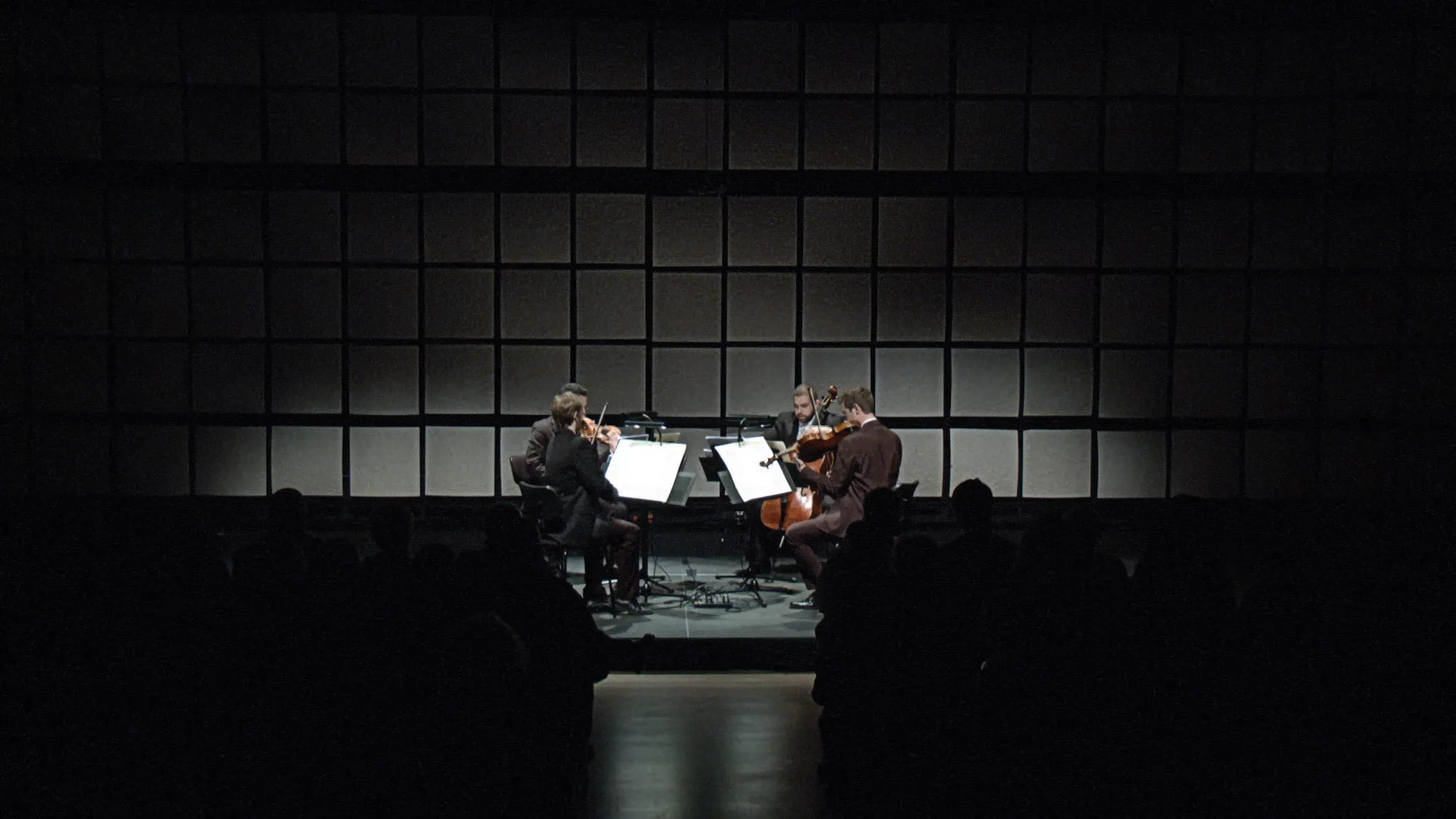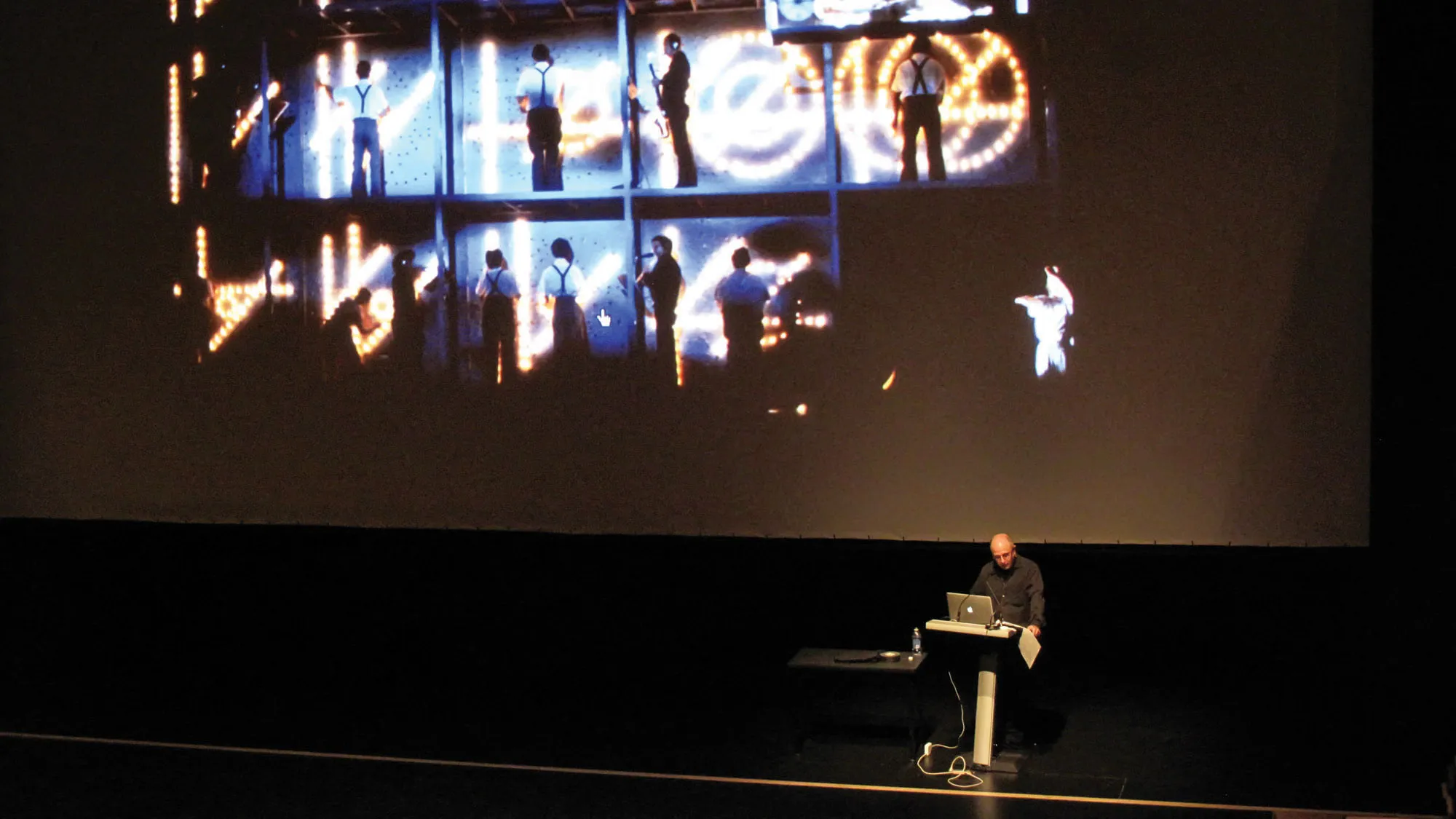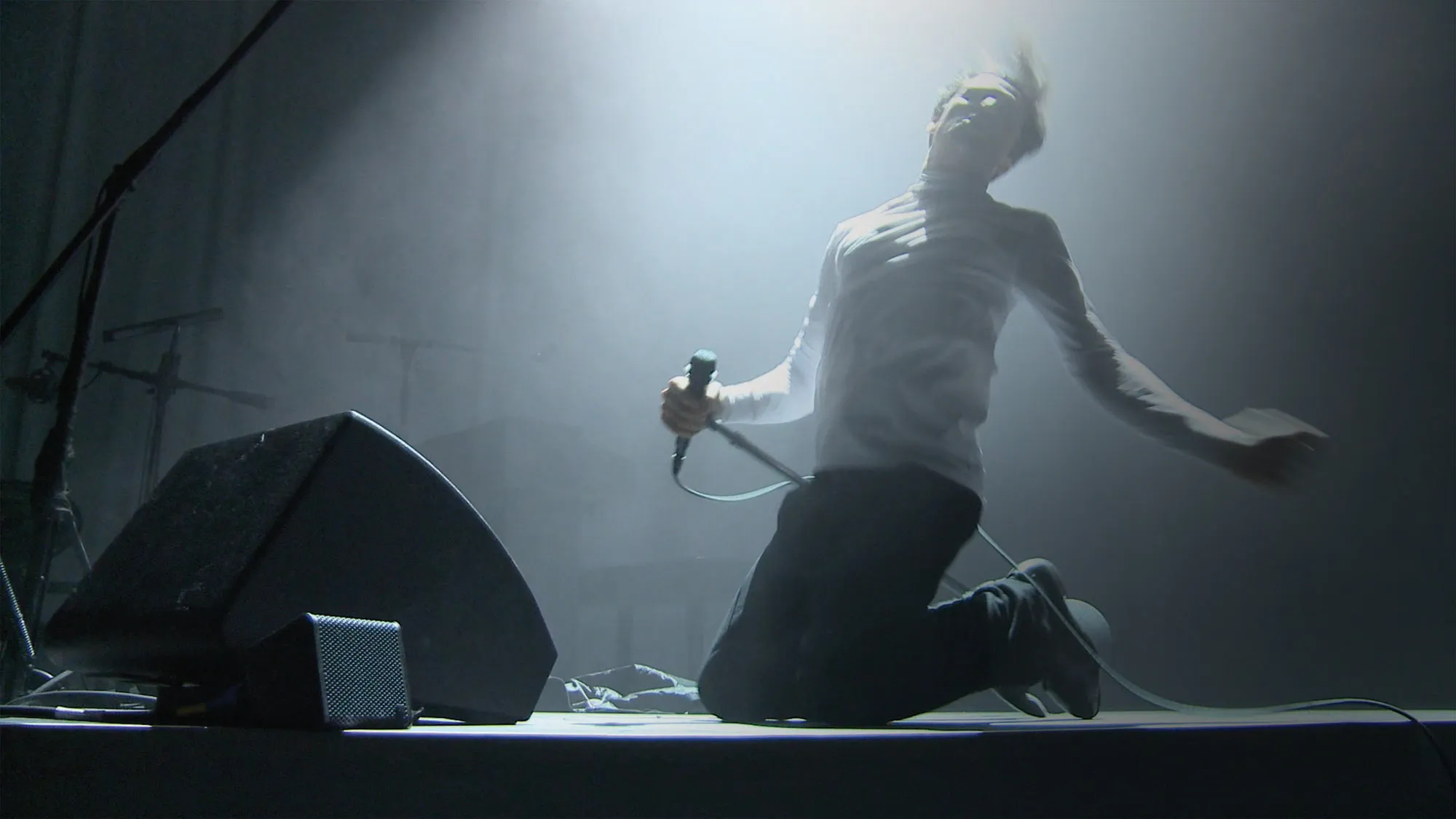Actual Reality
An audiovisual performance developed in residency by Lucky Dragons, Actual Reality is an ongoing collaboration between Los Angeles-based artists Sarah Rara and Luke Fischbeck. Connecting a Google alert archive of the phrase “actual reality” to the acoustic sounds of musicians and audience, it created a type of call and response using re-synthesized sounds to answer each query. Along with the “real” performance, collected source material—video and audio from previous performances, rehearsals, and incidental audio—was processed and layered on top in real-time, creating an endless loop of what is, and has been. This version of Actual Reality was staged for bassoon, three flutes, percussion, moiré table, and electronics.
Fischbeck and Rara have presented interactive performances and installations at MOCA Los Angeles, Smithsonian’s Hirshhorn Museum and Sculpture Garden, the Whitney Museum of American Art (as part of the 2008 Whitney Biennial), the Kitchen, the Walker Art Center, REDCAT, ICA London, ICA Philadelphia, and the Centre Pompidou in Paris.





